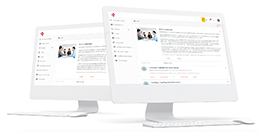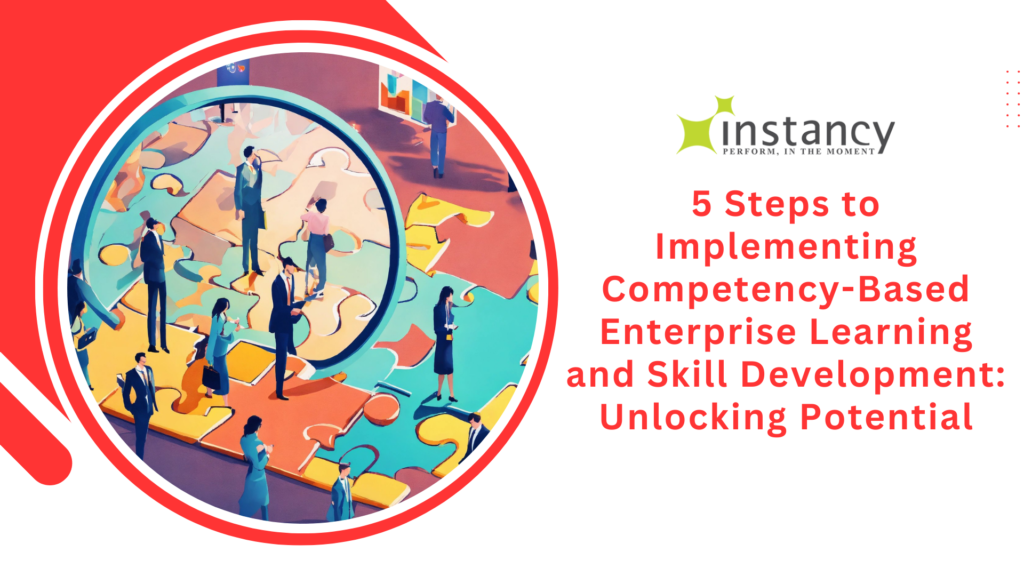Introduction:
In an era where the only constant is change, organizations increasingly recognize the value of competency-based learning as a critical tool in their talent development arsenal. Unlike traditional education models, competency-based learning focuses on real-world skills and knowledge that directly correlate with job performance and organizational goals. This approach enhances employee capabilities and drives business success by ensuring that the workforce is agile, adaptable, and ready for whatever challenges lie ahead. This article will explore the five essential steps to successfully implementing competency-based learning and skill development in the enterprise.
1. Define Competencies and Skills Required for Each Role
The journey begins with a clear understanding of the competencies and skills essential for success in each role within the organization. This step involves an in-depth analysis of job descriptions, performance criteria, and future business objectives to identify the specific abilities employees need to excel. Collaboration between HR, department heads, and team leaders is crucial to accurately define these competencies, ensuring they align with current and future organizational goals.
2. Develop a Competency Framework
Once competencies are defined, the next step is to develop a comprehensive competency framework. This framework serves as the foundation of the competency-based learning program, outlining the skills and knowledge required across different organizational roles and levels. It includes descriptions of each competency, levels of proficiency, and how competencies can be demonstrated and assessed. A well-structured competency framework is essential for creating clarity around performance expectations and guiding the development of learning pathways.
3. Create Personalized Learning Pathways
Organizations can create personalized employee learning pathways with the competency framework in place. These pathways are tailored to meet each individual’s unique needs and starting points, focusing on bridging gaps between current competencies and desired proficiency levels. Incorporating various learning methods, such as online courses, workshops, on-the-job training, and mentorship programs, can cater to different learning styles and preferences, making the learning experience more engaging and effective.
4. Implement Competency-Based Assessments
Effective implementation of competency-based learning requires a robust system for assessing employee competencies. These assessments should be designed to measure theoretical knowledge and practical application of skills in real-world scenarios. Techniques such as simulations, project-based assessments, and peer reviews can provide valuable insights into employee progress, highlighting areas of strength and identifying opportunities for further development.
5. Continuously Monitor, Evaluate, and Adjust
The final step in the process is establishing mechanisms for ongoing monitoring, evaluation, and adjustment of the competency-based learning program. This includes tracking the progress of individual learners, assessing the impact of training on job performance, and evaluating the overall effectiveness of the learning initiatives. Feedback from employees and managers plays a vital role in this phase, offering insights that can be used to refine learning pathways and adjust the competency framework as organizational needs evolve.
Summary
Implementing competency-based learning and skill development in an enterprise setting is a strategic process that can significantly enhance organizational performance and employee satisfaction. Organizations can build a more skilled, agile, and engaged workforce by defining clear competencies, developing a structured framework, creating personalized learning pathways, implementing competency-based assessments, and continuously monitoring and adjusting the program. As businesses continue to navigate the complexities of the modern landscape, embracing competency-based learning offers a clear path to unlocking the full potential of their human capital, ensuring they remain competitive and ready for the future.
Instancy’s Competency-Based Learning System represents a significant leap forward in how businesses approach their employees’ upskilling and reskilling. Tailored to meet the specific needs of various job roles and competency requirements, this innovative platform leverages the power of generative AI to automate the development of job roles, competencies, and skill descriptions. By integrating AI throughout its framework, Instancy ensures that learning objectives and resources are perfectly aligned with the skills employees need to thrive in their current positions and advance in their careers. Moreover, the system’s AI-driven recommendations personalize the learning experience, catering to each learner’s job role and future aspirations, thus fostering a more engaged and efficiently skilled workforce.
We invite you to experience the transformative impact of Instancy’s Competency-Based Learning System firsthand by signing up for a free trial https://www.instancy.com/contact-us/. Discover how our platform can streamline your talent development process, making it more efficient and aligned with your organizational goals. Whether you’re looking to enhance employee performance, boost retention, or prepare your workforce for future challenges, Instancy provides the tools and insights you need to succeed. Start your journey towards a more competent and prepared team today, and unlock the full potential of your employees with the cutting-edge solutions Instancy offers.




